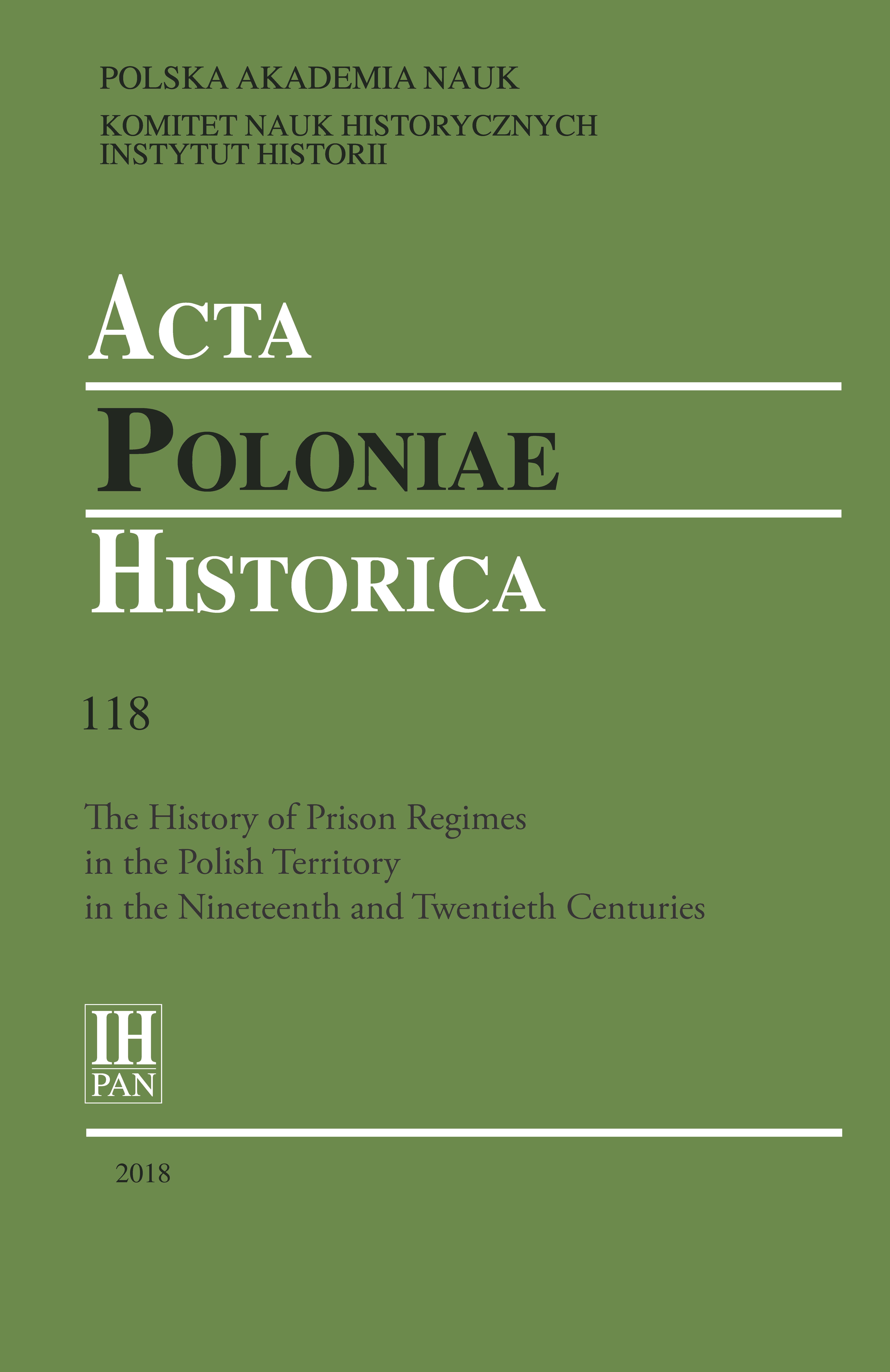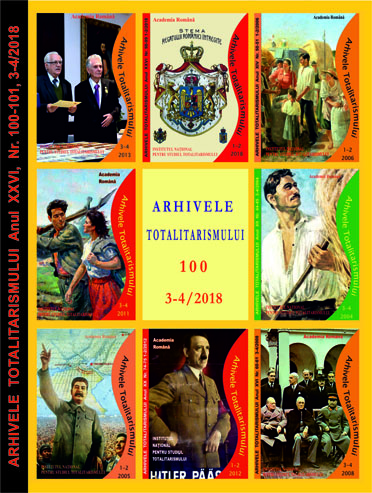
În căutarea unei sinteze a istoriei Securităţii
This is a review of Florian Banu and Liviu Ţăranu' book Securitatea. 1948-1989, vol. I.: Monografie, C.N.S.A.S., Editura Cetateade Scaun, Târgovişte, 2016, 477 p.
More...We kindly inform you that, as long as the subject affiliation of our 300.000+ articles is in progress, you might get unsufficient or no results on your third level or second level search. In this case, please broaden your search criteria.

This is a review of Florian Banu and Liviu Ţăranu' book Securitatea. 1948-1989, vol. I.: Monografie, C.N.S.A.S., Editura Cetateade Scaun, Târgovişte, 2016, 477 p.
More...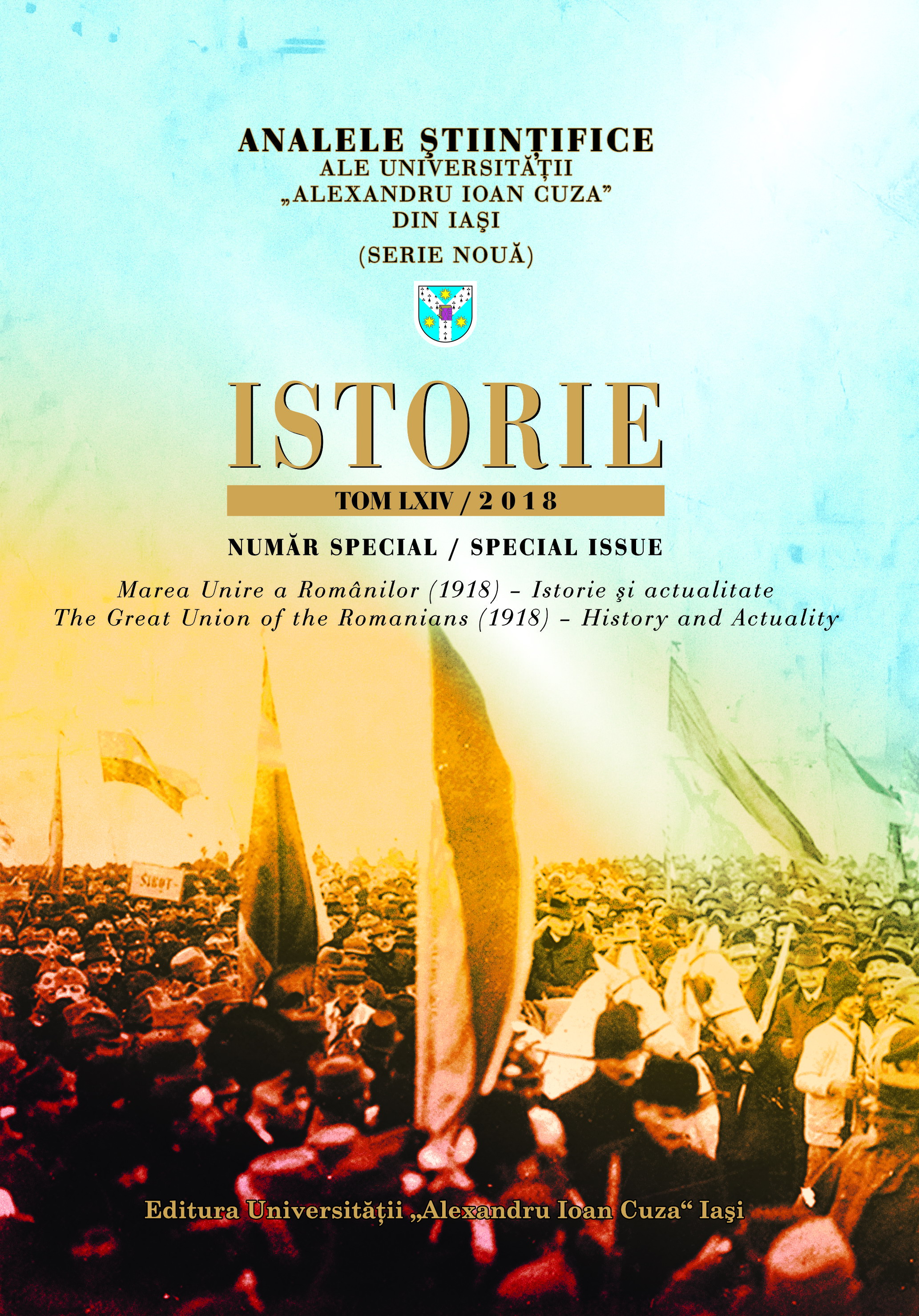
When making reference to the Romanian historiography in the communist period, especially in its "mature" age – that is in the years dominated by the personality of Nicolae Ceauşescu – the phrase "national-communism" is frequently employed. This use underlines that, beginning from the first part of the Sixties, the historiography was related with the new dominant political address in the communist regime. Nevertheless the historiography was able, or rather it was induced to recover not only the principal themes of the national history, but also some interpretations that succeeded in gathering the feeling of the public opinion and of the population, sometimes also in its less sober forms. This is a very simple thesis largely shared both by the Romanian historiography after 1989, and, with greater belief, by the international historiography. In this paper, I will try to test the soundness and above all the relevance of that thesis with respect to a chiefly outstanding exemplum, since it led to the realization of the greatest Romanian national program that is the building of the “România Mare” (Great Romania). For this aim I will review some texts of the years Sixties-Eighties, with a particular consideration for those texts that were translated for the non-Romanian public, included the Italian readers. Such scientific production (in line with and appreciated by the communist regime) was fed by researchers who had professional skill, but were “organic” to the ceauşism. Naturally there are numerous references to political statements; more often those of Nicolae Ceauşescu, than those referring to the classics of Marxism.
More...
In the eve of the Soviet Union collapse, Radio Free Europe played an important role in the process of retrieving the historical conscience of Bessarabian Romanians and of their national conscience. In the shows of this radio station, they regularly approached several topics concerning the history of Romanians, under Soviet occupation. Throughout the 8th decade of the twentieth century, the protagonists of such shows dedicated to estranged Romanians at this radio station were Grigore Singurel (Efim Crimerman), (from 1981), Nicolae Lupan (from 1983) and Vlad Socor (from 1989). Out of the three protagonists of such shows, Nicolae Lupan was the most prolific and persistent in evoking important pages within the history of Romanians estranged from the Soviet occupation regime. In his shows, he showed a special predilection for the historical importance of the first Bessarabian parliament – the Country and Reunification Council, in 1918, of this Romanian province with the motherland. A future sociological investigation carried out in the Republic of Moldova concerning the impact of the Free Europe radio shows on the Romanian citizens in the eighties would enable an appraisal of the effects on the collective mindset through the message that was meant to revive the historical and national conscience of Bessarabian Romanians.
More...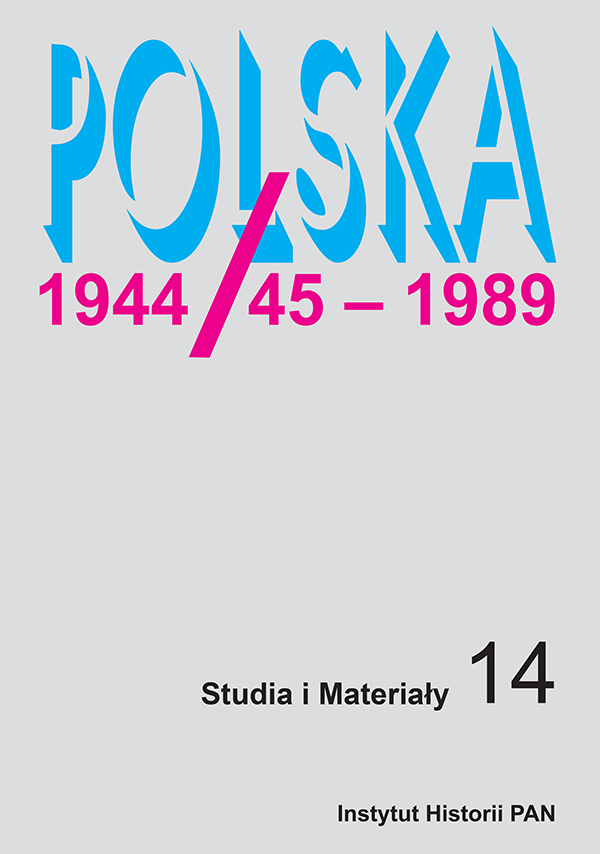
On 28 August 1953 at the village Okół in the Kielce region a rebellion broke out against the delimitation and ploughing with tractors of a large plot of land which was to be farmed jointly within a newly created cooperative. Its participants actively stood up against representatives of the local authorities and supporters of the cooperative. Some of them were beaten up, and the tractors that were ploughing the apportioned plot of land were damaged. The revolt resulted in in arrests, detentions and lawsuits of its most active participants. A special role in this rebellion was played by women, who were attacking the organisers of the cooperative. Research has revealed that this unusually large participation of women in the anti-collectivisation resistance was not only a Polish specificity. Its traditions reach back to the women’s revolts against the creation of cooperatives in the USSR that escalated in 1929–1930. Women were especially active in anti-collectivisation rebellions in some other Eastern European countries after 1948 (Bulgaria, Hungary, Romania). There are among the forms and strategies of the peasant resistance against collectivisation some which were more often used by women than by men. This “gender of the resistance” was expressed by an exceptionally emotional reaction to all the forms and manifestations of the policy against the Church, by the use of religious rituals and their instruments (singing, saints’ images, processions) in the fight against collectivisation, inclinations to use particular tools associated with the role played by women in the rural life. There is evidence to suggest that the authorities were less inclined to victimize women fighting in the revolt than men.
More...
The “thaw” which was brought up by the year 1955 evidenced a fact, concealed from the late 1940s, that unemployment could exist also in socialist countries. From the mid-1955 the problem was no longer a taboo subject, and in 1956–1957 it even became a topic of open discussions. And although unemployment of the second half of the fifties was often compared to that before the war, some distinct differences were evident. First of all, there was no a uniform system of support for the unemployed which would provide, for example legal, systematic unemployment compensations. There were also some striking regional differences, for instance Upper Silesia (Górny Śląsk) was facing an acute shortage of labour force, while numerous regions of Central and Eastern Poland, especially small towns and rural areas, had unemployment of structural character (the purpose of the so-called “intervention found” of 1956–1958 was, among others, to create new jobs in backward regions). Contrary to that before the war, unemployment of the 1950s did not affect mainly men and (qualified) workers, but women in the first place and employees with low qualifications. The shared features were the lack of jobs for intellectuals and for young people who were just entering the labour market. A characteristic trait of the “thaw” unemployment was also the necessity to employ many repatriates from the USSR, redundant civil workers of the state administration, functionaries of the security services, the party apparatus and (non-)commissioned officers of the Polish Army. An endemic phenomenon in the scale of the whole post-war period was a temporary return to the idea of legal labour emigration.
More...
In the 1970s in Western Europe, in the United States, in the Middle East and in Central and South America many brutal terrorist attacks took place. The public opinion witnessed the activity of various groups, representing different systems of values. The acts of political violence were exercised in the name of ideology, national liberation or religion. Polish public opinion during the communist rule observed the happenings from a distance, but with much attention. People’s Poland in the 1970s published more than a dozen academic, journalist and popular works on the topic of terrorism. The most influential weekly papers (Polityka, Kultura) dedicated many features to the problem of terrorism. The article, basing on books and press articles from the period, aims to answer two questions. What did the state of public knowledge about terrorism, which could be acquired from open sources, look like? How was the phenomenon of international terrorism and its various forms described and evaluated?
More...
The industrialization of the 1975–1989 period brought changes in spatial development and transformations in the human natural environment. New industrial investments required space for their implementation. As a result, the size of green areas near the cities gradually decreased. In addition, the activity of the “old” plants, as well as those under development, posed a serious threat to the environment. These problems were also evident in the province of Kielce. In the middle of the Gierek’s decade the region ranked fifth in the country in terms of the amount of pollution emitted into the atmosphere. In the area of “White Basin”, where many cement and lime factories were concentrated, dust fallout production standards were exceeded even several times. Results of the analyses on the problem of environmental threats may become an important part of the debate on socio-economic processes taking place in Poland during the postwar period. Hitherto studies of industrialization in the years 1944/1945–1989 focused mainly on its social consequences. However, they almost completely ignore the issue of degradation of the ecosystem, which is also closely associated with the industrialization pursued.
More...
In the initial part of the paper, the history of trade unions in the Polish theatre has been outlined. Also, the situation in the theatre environment in the second half of the 1970s has been presented. In that time, the first symptoms of the conflicts, which later influenced the activity of the theatre section of “Solidarity”, appeared. Actors participated in the “Solidarity” movement since the very beginning. They took part in strikes in the coastal cities Gdańsk and Gdynia in August 1980, after which Committees of the new trade unions were established in most theatres in Poland. A need for coordination of the Committees appeared, and therefore, on the 10 November 1980, the theatre section of “Solidarity” was established. It dealt with the following issues: conditions of employment, theatre education reform, theatre’s self-government, work on Saturdays, and the theatre reform. However, its actions proved to be a failure, whose main reason was the split inside the section caused by the conflict between one part of the theatre “Solidarity” with the SPATiF (Association of Polish Theatre and Film Artists) authorities. A description of the mentioned conflict forms an essential part of the present paper.
More...
The following article shows the specific activity of the Beatles Fan Club in Lublin, in difficult realities of the 1980s, and its evolution from a neighbourhood circle of interest to the fan club of international activity. The article outlines not only a general description of the history of the fan club, but also recollections of its members and guests, who participated in meetings of the Beatles’ fans, among others journalists: Jerzy Janiszewski, Hirek Wrona and the author of Beatlemania. Obsession or madness? Marek Szpejankowski. There are also presented numerous fan-club’s members, for example editor Peter Metz, and events, together with a description of fan-club gadgets, all against the backdrop of the realities of the eighties. One of the purposes of the article is to contribute to our knowledge about the life in the Polish People’s Republic as well as open a discussion about the unique cultural phenomenon that under the circumstances of communist Poland should not have come into being. The Fan Club events, information and milestones are arranged in a chronological order.
More...
The Round Table (February – April 1989) has been a thorny issue for many years, igniting debates among historians and politicians of the Third Polish Republic, and opinions about it – favourable or unfavourable – corresponded with the opinions of general achievements of the transformation of the Polish political system. Already during the negotiations, the Round Table talks caused controversies and deepened personal and ideological divisions within Solidarność and the opposition. The end of 1988 brought about the emergence of a tendency to contest the line of action of Wałęsa and his circle, and especially rejected the need of Round Table talks with the communist government. The tendency was shared by political groups originating from Solidarność and newly formed political parties, numerous but weak, existing on the margin. The article presents the most important arguments of political opponents of the Round Table talks – the radicals of the crucial time of changes in 1988 and 1989. The author answers the question whether it is right to use the term “radicalism” and attempts to determine the scope of a social base of radicals; he points out that many arguments put forward by the opponents of the negotiations were also presented by journalists and oppositionists supporting Lech Wałęsa. He thus advances a thesis that it was not political concepts that distinguished radicals from the rest of the opposition, but their specific psychological attitude; this, however, requires further study.
More...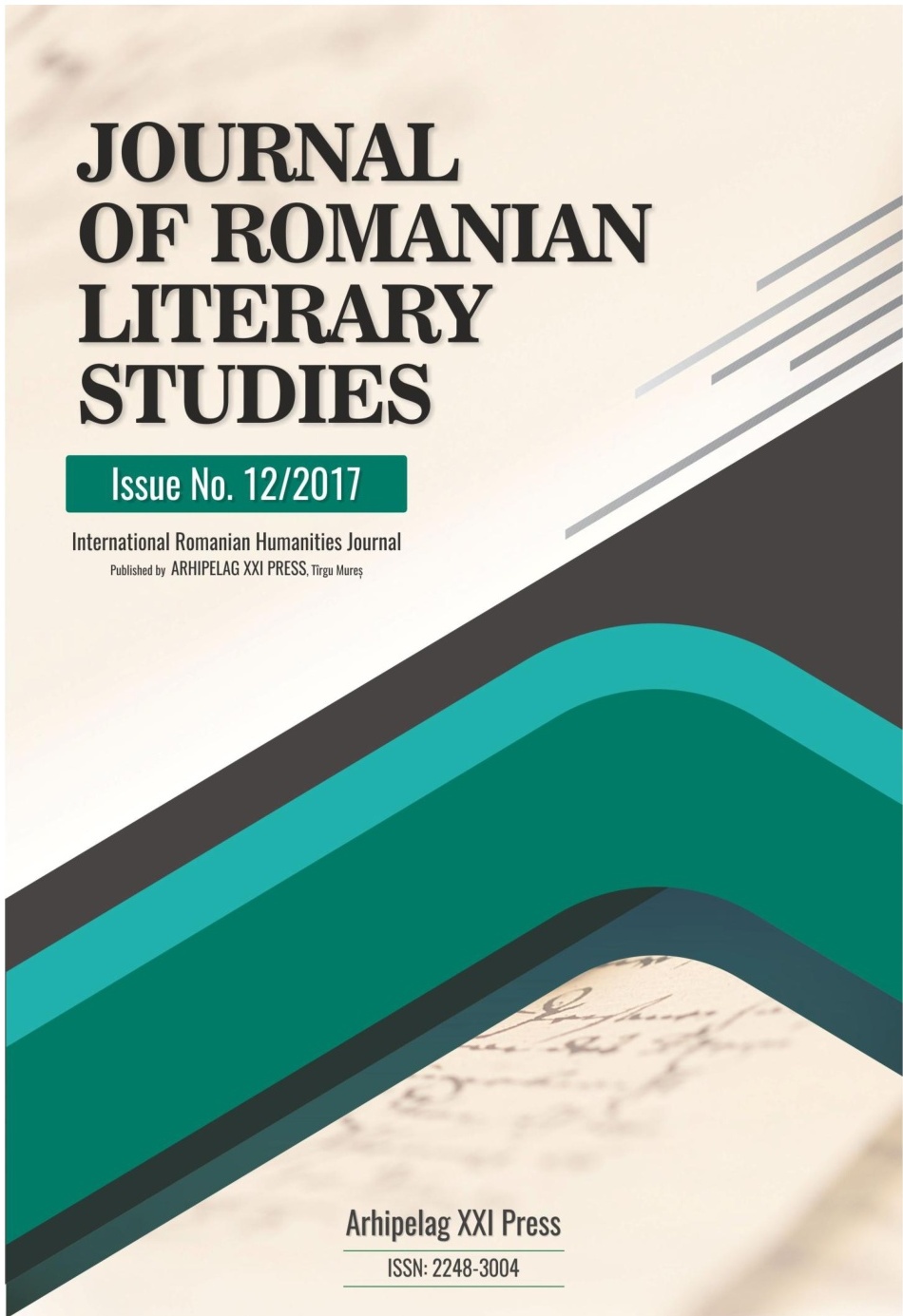
Titus Popovici is a controversial personality of the communist literature, being apart due to his work, such as the Stranger, The Thirst, and Ipu's Death and also for his veracious duplicity. The political lode is a determinative inspiration for the 1948-1989 literature, being very well presented in Titus Popoviciu's work , written during the communism. Nevertheless, conspicuousness disclosures about the communist lead are captured in his postdecembre work, presenting the contentious and subversive writer, eliding his trimmer position.
More...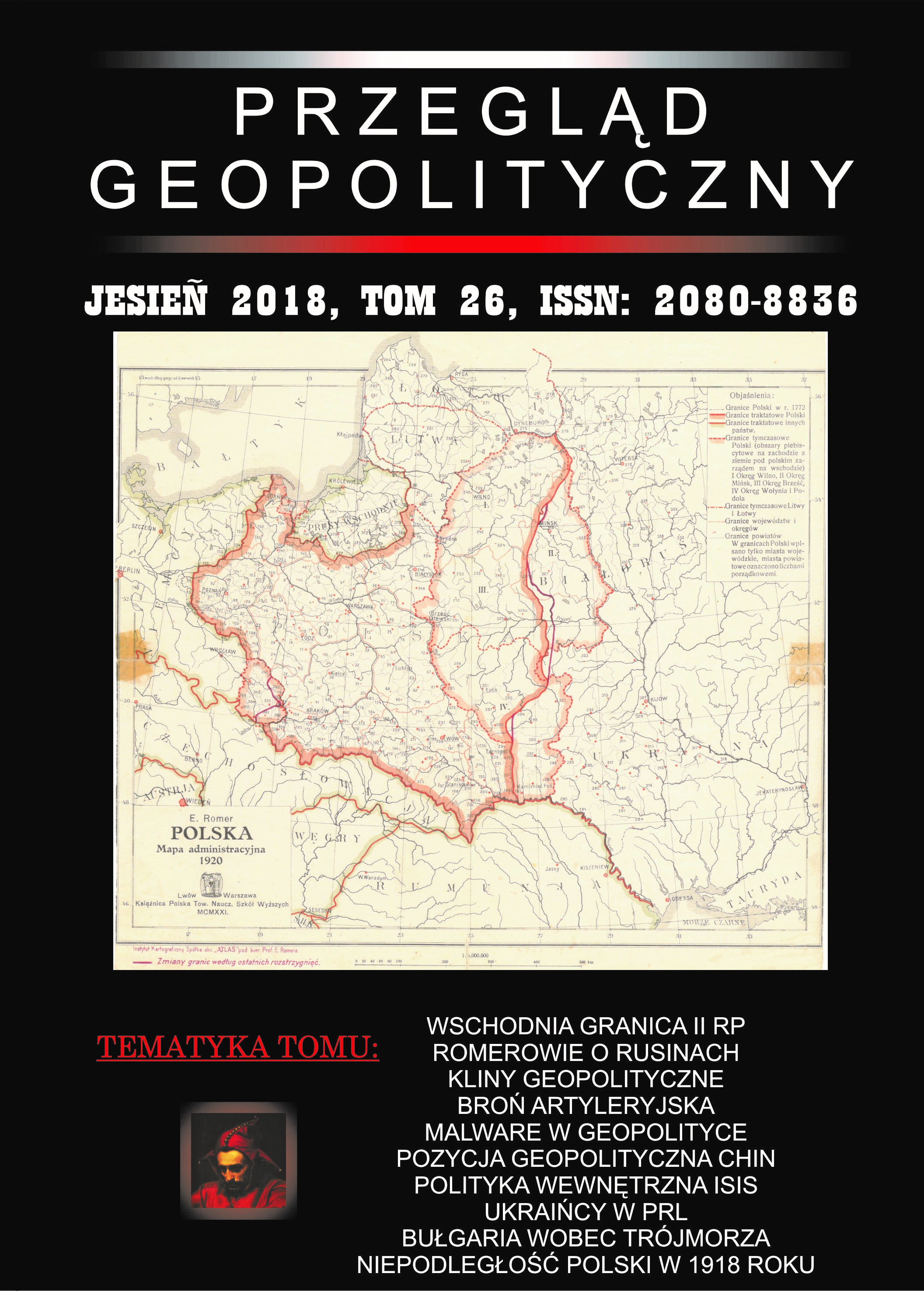
The aim of the article is to present the way Ukrainians were treated by the securityservices of the Gomułka’s Polish People's Republic (1956-1970). The synthetic approachis based on specific examples. The "Wisła" military operation (1947) was considered thebeginning of the systematic control of the Ukrainian community. Ukrainians wereinvigilated under the pretext of "protection against nationalism". Despite the laterchanges in internal politics, this paradigm of the SB's actions towards this nationalminority remained unchanged. It was also a pretext for infiltrating the Ukrainiandiaspora in the West. It also used to break the Polish-Ukrainian relations establishedthere based on anti-Communism. The activities of the SB reflected the assumptions ofthe ethnic policy of the Soviet empire under the rule of Khrushchev and Brezhnev. Theyalso confirmed the vassal relationship between communist Poland and its easternneighbor.
More...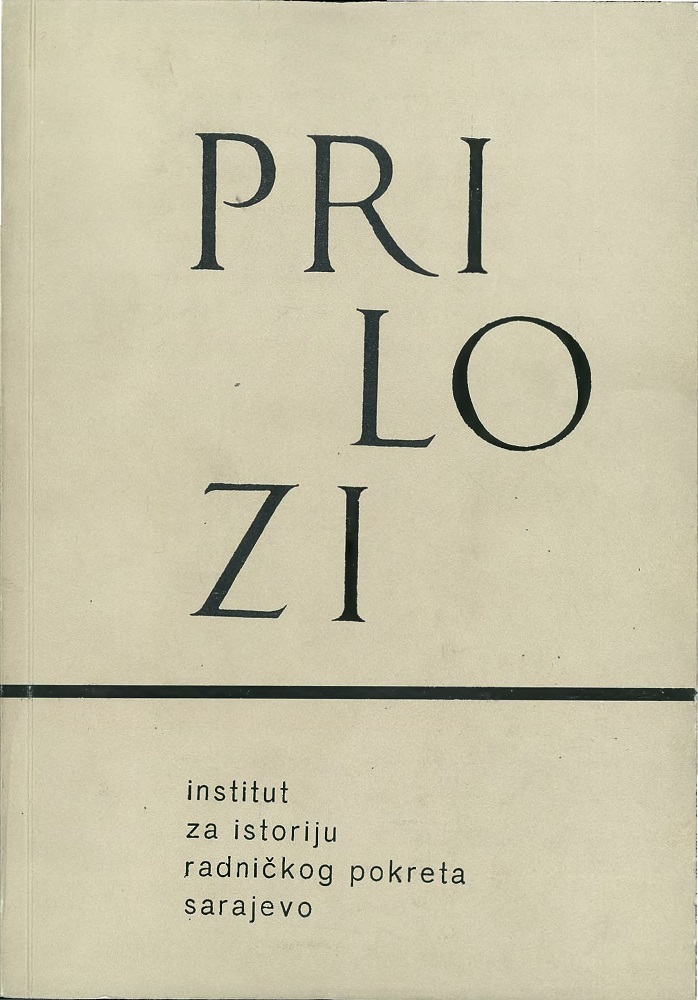
Savremeni društveni razvitak je složenošću pojava i odnosa stavio istorijsku nauku pred zadatak da još više razradi marksistički i kritički teorijsko-metodološki pristup ocjeni istorijskih kretanja. Imamo namjeru da ovdje iznesemo samo nekoliko napomena o razvoju istorijskih istraživanja kod nas. Ne pretendujući da sistematski izlažemo neke teorijsko- -metođološke probleme savremene historiografije, željeli bismo da naglasimo potrebu da se o njima diskutuje šire i organizovanije.
More...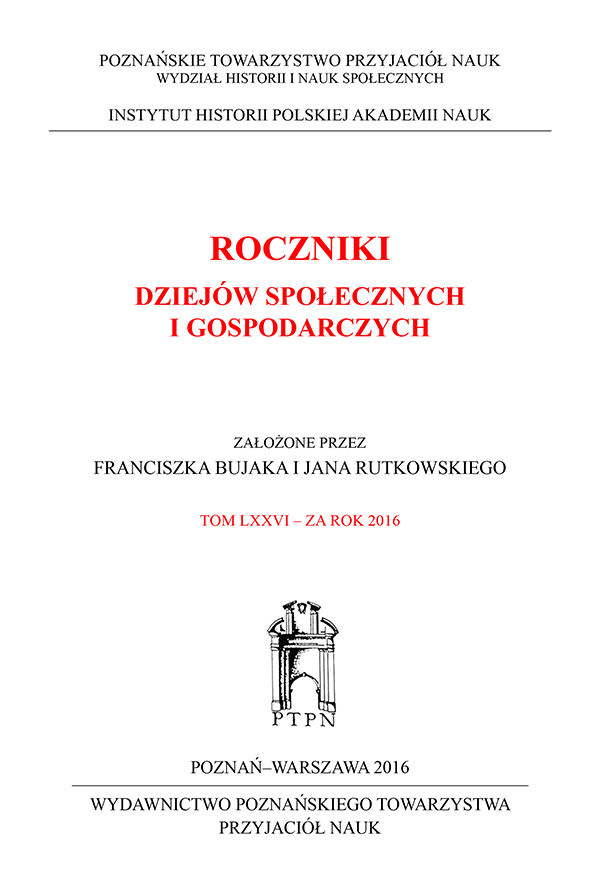
The paper focuses on the attempts of modernising the Polish machine industry in the 1960s. The undertakings of the decision-makers are illustrated through the case of negotiating and signing license contract for the production of new motor vehicle, Fiat 125p, by the FSO. The cooperation with the Italian automobile company Fiat and the production of a car with mid-sized engine was meant to positively influence the structure of the export sector of the machine industry.
More...
In the 1980s there were visible changes in the functioning of the craft. In this decade, many Polish entrepreneurs started businesses. In the article – on the basis of selected examples – the creation and further development of small private craft involved in the production of cosmetics is shown. The vast majority of the collected material is based on the memoirs of the founders, interviews and newspaper articles. In the introductory part attention is drawn to the beginnings of the cosmetics industry in Poland and the characteristic of this industry in times of crisis – increased demand for cosmetics, called “lipstick effect.” Qualifications, experience and psychological predisposition of the owners were discussed. Particular attention was paid to the subjective perception of economic or administrative reality during this era: the obstacles and difficulties in initiating their own business.
More...
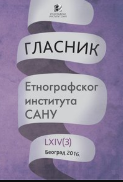
The Macedonian minority in Serbia has always attracted great attention from Macedonian researchers, especially during the 70’s and 80’s of the 20th century. The interest, except in historical, philological and cultural terms, was also present regarding the dance tradition. This text will deal with the transfer, nurturing and maintenance of the dance tradition among the Macedonians in Glogonj and Jabuka, according to examples from the ethnochoreologist Mihailo Dimovski’s research. He had taken an interest in Macedonian minority in 1973, whereupon he performed an extensive ethnochoreological research and collected extensive material. His records, which are in the Archive of the Institute of Folklore "Marco Cepenkov" – Skopje, have not been completely published yet. Thus, the text will be an attempt to present his findings regarding the dance tradition of the Macedonian diaspora in the said period
More...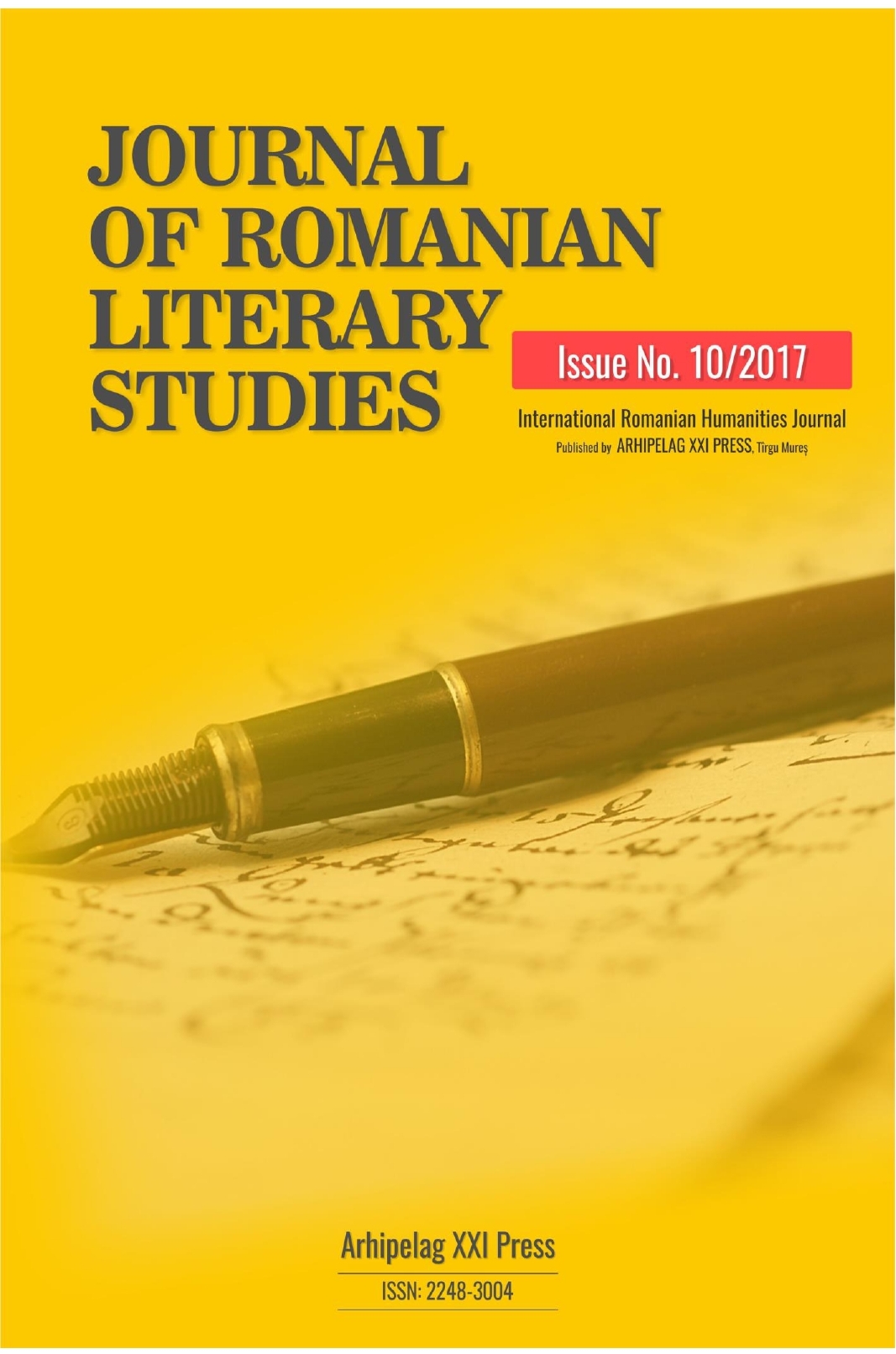
Since the '80s, the anime culture begins to have strong roots in the United States. Since the discovery of the profitability of its localization in the '70s, anime has gained increasingly more popularity among the American public. In this context, it is hardly surprising that the anime began to exert a strong influence on the film industry, especially the Hollywood. This was done gradually since the mid 80s, reaching currently close to its peak. Anime influence on film productions is achieved in two ways: as a source of inspiration, or as direct film adaptations after animes. Now we can talk about a symbiosis of two types of collaborations between anime and the film industry, one direct and one indirect. In the present study, we will see how the two industries reinforce each other and progress together.
More...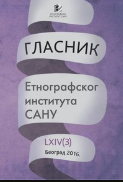
The paper presents general assumptions and the topics covered of the larger study (to be published) on Serbian urban families in the 1980’s. The research was carried out in four cities: Šabac, Užice, Kruševac and Bor. The larger study explores the transmission and maintenance of certain traditional customs and relationships, along with their modifications, adaptations, adjustments or disappearances due to the requirements of contemporary urban life. The main assumption of the study is that the urban, city family has different characteristics and functions than the rural one. The research method included a questionnaire with various questions concerning the structure of the family, income, occupations, educational level, origin, family hierarchy, property, kinship relations and so on. The research sample, which included more than 50 families from all four cities, represents a good foundation for analysis and comparisons. In fact, the sample reveals a general, homogeneous picture on a number of traditional elements among Serbian families in the 1980’s. Additional data were collected in a few other cities. The results of this study will be compared with the author’s previous studies on rural families, suburban areas and city dwellings in Serbia. The data collected so far point to the conclusion that each city has retained a number of traditional, specific features, compatible with its local tradition, population origin, economy, and environment. In spite of the study limitations, it seems likely that the main assumption will be found true.
More...